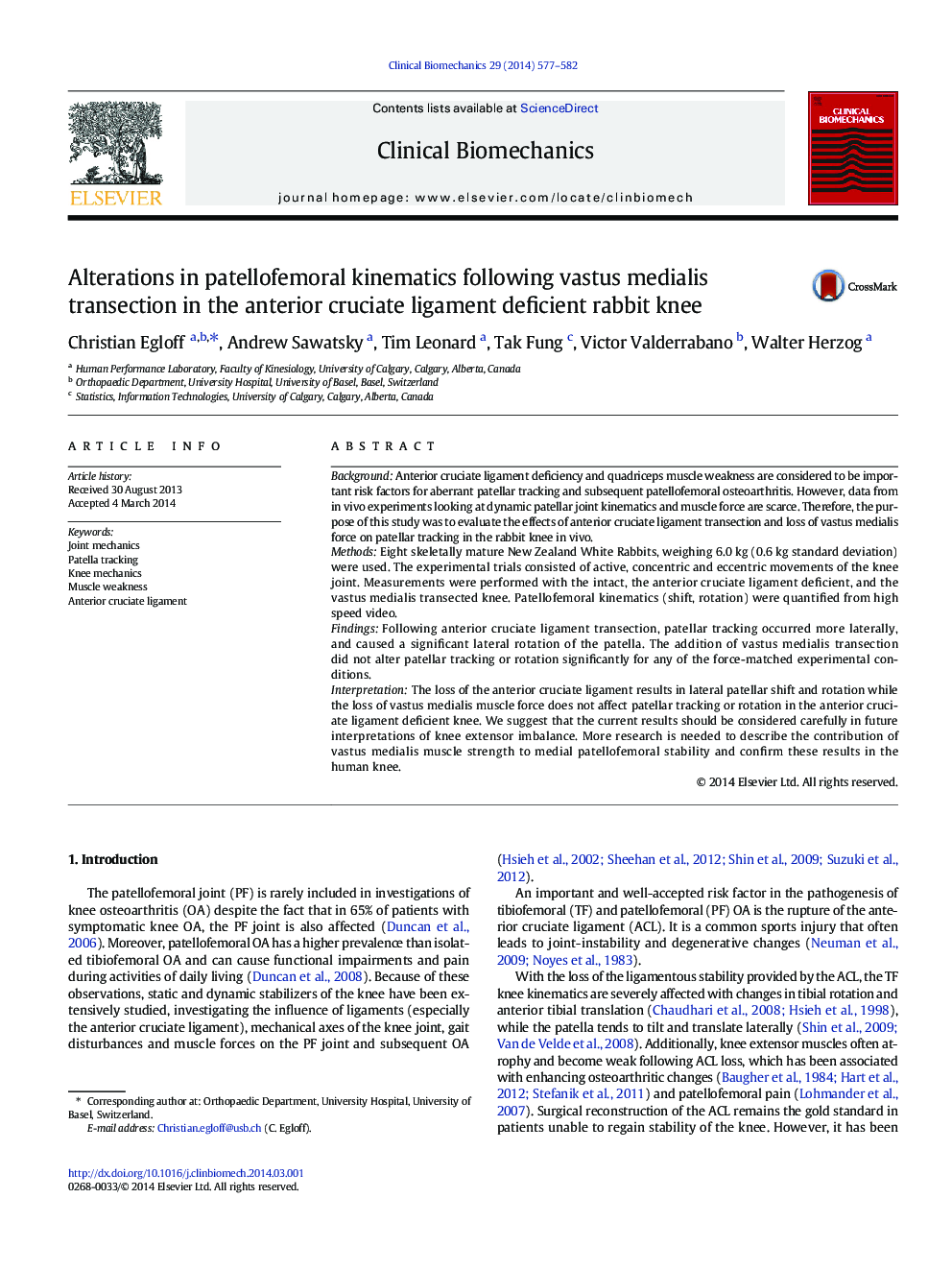| Article ID | Journal | Published Year | Pages | File Type |
|---|---|---|---|---|
| 4050352 | Clinical Biomechanics | 2014 | 6 Pages |
BackgroundAnterior cruciate ligament deficiency and quadriceps muscle weakness are considered to be important risk factors for aberrant patellar tracking and subsequent patellofemoral osteoarthritis. However, data from in vivo experiments looking at dynamic patellar joint kinematics and muscle force are scarce. Therefore, the purpose of this study was to evaluate the effects of anterior cruciate ligament transection and loss of vastus medialis force on patellar tracking in the rabbit knee in vivo.MethodsEight skeletally mature New Zealand White Rabbits, weighing 6.0 kg (0.6 kg standard deviation) were used. The experimental trials consisted of active, concentric and eccentric movements of the knee joint. Measurements were performed with the intact, the anterior cruciate ligament deficient, and the vastus medialis transected knee. Patellofemoral kinematics (shift, rotation) were quantified from high speed video.FindingsFollowing anterior cruciate ligament transection, patellar tracking occurred more laterally, and caused a significant lateral rotation of the patella. The addition of vastus medialis transection did not alter patellar tracking or rotation significantly for any of the force-matched experimental conditions.InterpretationThe loss of the anterior cruciate ligament results in lateral patellar shift and rotation while the loss of vastus medialis muscle force does not affect patellar tracking or rotation in the anterior cruciate ligament deficient knee. We suggest that the current results should be considered carefully in future interpretations of knee extensor imbalance. More research is needed to describe the contribution of vastus medialis muscle strength to medial patellofemoral stability and confirm these results in the human knee.
